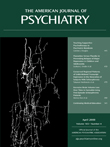The second edition of Manic-Depressive Illness is an absolutely outstanding book by Frederick K. Goodwin and Kay Redfield Jamison, two giants in this area of psychiatry. It is a beautifully written, scholarly, and sophisticated text of more than 1,200 double-column pages, richly illustrated with useful tables and figures. The first edition of Manic-Depressive Illness, published in 1990, was an outstanding and unique contribution to the psychiatric literature and won its authors universal acclaim. In the past 17 years this book has become a classic reference for psychiatrists and psychologists. The title of the second edition remains the same, with the addition of the subtitle Bipolar Disorders and Recurrent Depression . The new edition is not merely a cosmetic update but an extensive revision of the previous edition, with the most up-to-date information on the research in the field.
The first section, “Clinical Description and Diagnosis,” gives a clear account of the importance of conceptual issues in clinical and research work related to mood disorders. I am impressed with the deep wisdom of the discussion of the manic-depressive spectrum. The spectrum conceptualizes a continuum between full-blown bipolar and unipolar affective illness and milder states or characteristics that may be construed as temperament. The authors suggest that there is a need for at least a partial return to the unitary Kraepelinian concept of manic-depressive illness and that frequently recurrent depression should be regarded as a manic-depressive spectrum disorder. The authors further suggest that the next revision of DSM and ICD classifications should include a category and operational definition for the recurrent forms of unipolar depression. The second section, “Clinical Studies,” covers issues related to the course of illness, outcome, epidemiology, comorbidity, suicide, and pediatric manic-depressive illness. The wonderfully written chapter on suicide is especially important because patients with mood disorders are much more likely to commit suicide than those with other psychiatric and medical illnesses. A discussion of the hypothesis that patients with mood disorders develop alcohol and drug use disorders in an effort to self-medicate is also of great interest. The authors suggest that “it is probable that a subgroup of bipolar patients abuses alcohol and other drugs to intensify elevated mood and energy states, while another group abuses the same substances to ameliorate or self-medicate their manic, depressive or mixed symptoms. Some do both.”
The third section, “Psychological Studies,” deals with neuropsychology, personality disorders, interpersonal functioning, assessment, and creativity. Important psychosocial issues such as marital functioning, sexual behavior, and assortative mating among bipolar patients are thoroughly discussed in the chapter on interpersonal functioning. The chapter on creativity presents intriguing scientific and biographical evidence linking manic-depressive illness to creativity. The authors wisely counsel their readers, “The existence of potentiating positive features in bipolar illness, perceived to be or actually associated with increased creativity and productivity, affects the willingness of some afflicted with the illness to seek and comply with treatment.” The fourth section, “Pathophysiology,” demonstrates the vast accumulation of new information we have gained regarding the biological mechanisms of bipolar disorders. Cutting-edge genetic, neuroimaging, circadian rhythm, and other studies are presented in this part of the text. The fifth and final section, “Treatment,” provides a wealth of information on medical treatment, psychotherapy, management of suicide risks, and other issues. The review of the literature on the use of novel anticonvulsants, antidepressants, and atypical antipsychotics is excellent. Multiple treatment problems are discussed in this part of the book. It has been noted that even with the best available treatment many patients do not achieve remission. A chapter on nutritional supplements provides clinicians with useful information that may help answer patients’ questions about nutritional remedies.
This is a well-balanced book that comprehensively covers a wide terrain. No doubt, this book is the most comprehensive text in the field of bipolar disorders and one of the best medical texts in the world. This text is a monumental and unparalleled achievement and a treasure of ideas. One can read the book in its entirety and be comprehensively informed about the complexities of manic-depressive illness, or one can adopt this book as a useful reference to selectively research various aspects of neurobiology, assessment, or treatment. The clarity of its exposition makes it a very valuable resource for clinicians and researchers that can also inform patients with mood disorders and their families.

